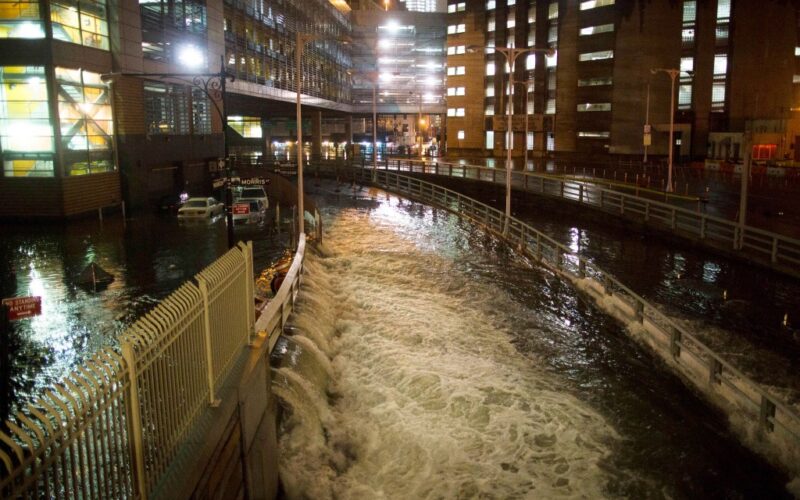In October 2012, I prepared with my National Guard unit for Superstorm Sandy. I still remember the feeling of uncertainty about what was about to happen — then the aftermath, fellow New Yorkers’ homes literally washed away — for the rest of my life.
That was a defining, first-hand experience of the reality of the era we are living in.
But I am just one of many. Most of us have a similarly devastating firsthand experience, from the fires that tore through the ritziest parts of L.A. this year, and the smoke that wafted over New York’s wealthier and lower-income zip codes alike last year. We are beyond the days when anyone gets to sit this out.
Stronger, more frequent storms are a kitchen table issue. It’s time to address them with cement and steel, trees and grass, neighborhood by neighborhood, with the same urgency and focus that we devote to solving the housing crisis.
This Earth Week, the Adams administration completed a $42 million investment in flood reduction infrastructure and trees in Flatbush and Canarsie, two of the most heat-vulnerable neighborhoods in the city. Going towards more than 900 infiltration basins, nearly 300 rain gardens and more than 200 new trees, the investment will absorb 122.5 million gallons of rainwater, the equivalent of 184 Olympic-sized swimming pools.
Individually, they don’t look like much: a street tree, a strip of grass next to the sidewalk. But that’s just it: they’re integrated into our city’s infrastructure, hiding in plain sight, doing double duty — the way all our infrastructure must — to beautify these neighborhoods and keep us safer against deluge.
They are just one piece of our broader stormwater management puzzle. We’re updating sewers in key areas, like Knickerbocker Ave., but sewer expansions are disruptive. We’re installing 100 miles of porous pavement by 2031, so the streets you commute on also do double duty in ways you’d never know.
We’re sinking basketball courts to hold water during major storms — we will open the first one of these “cloudburst projects” in Jamaica, Queens soon. We set aside $300 million in the last budget to study a “five borough blue belt strategy” — testing the feasibility of installing ecologically rich drainage systems that look like ponds and wetlands but are integrated with pipes to route water away from homes and businesses citywide.
And then there’s coastal resiliency. If you’ve driven up the FDR recently, you’ve probably seen a series of interlocking parks rising above you to the east, another example of double duty in grander scale, itself just one piece of a broader effort to protect the city’s coastline from storm surge.
You might extrapolate that if rainwater assets in just Flatbush and Canarsie cost $42 million, that fully funding this litany of citywide interventions would cost much more.
You would be right. Mitigating the effects of climate change citywide is so expensive that our local tax dollars can’t possibly fully pay for it. It will require partnership across all levels of government.
The federal government doesn’t yet have regular, recurring revenue streams with which to pay for it all either. Traditionally, cities and states have had to compete for limited funds to fight a foe we all face together. So what’s to be done? On the emissions side, there’s money to be made by private industry.
A business can invest in electric vehicle chargers and then earn money on their use. Local Law 97, which mandates emissions reductions from our largest source of carbon dioxide, our buildings, is creating a cottage industry of consultants and builders to help.
Not so for our effort to protect our city from ever-stronger storms.
A climate resiliency task force, made up of leaders from the business, advocacy and finance communities, recently set out a series of recommendations, including establishing Business Improvement District style-districts to fund the maintenance of our coastal resiliency infrastructure, like flood walls that need to be able to quickly protect us when needed.
The city is evaluating those recommendations for feasibility, but on the premise they are absolutely right: we must be creative about how we fund environmental preparedness in the long-term — the cost of inaction is much higher.
In the meantime, protecting ourselves requires all of us. If you’re a homeowner, know your zone and make sure your insurance covers flooding. Everyone should know their exit strategy and keep potable water and flashlights on hand.
This is a sobering moment. With advocacy and preparedness, we can meet it head on.
Roth is New York City’s deputy mayor for operations.








